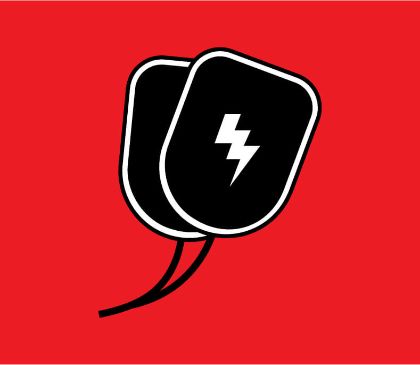So Now You Have an AED, What’s Next?
- Jul 15, 2019

Are you following AED best practices? Let’s find out!
Congratulations, AED owner! You’ve taken a very important step in maintaining the well being and safety of your employees, community members, and loved ones by purchasing an AED. Now let’s make sure that you’re following AED best practices to ensure that you’re getting the maximum benefit from your AEDs.
Are Your AEDs in Plain Sight?
Did you know that more than half of 2000 employees surveyed by the American Heart Association (AHA) cannot locate an AED at work?
Timing is critical when it comes to administering CPR or defibrillation. For every minute that passes without CPR or defibrillation, the chances of survival decrease 7-10% (AHA). By keeping your AED in a convenient, well-trafficked, and highly visible location, bystanders are more likely to respond in a timely fashion. Specialized AED wall cabinets and signage can also help dramatically.
Here are a few OSHA-ratified recommendations for optimal AED placement:
-
Areas where many people work closely together, such as assembly lines and office buildings.
-
Areas where electric-powered devices are used.
-
Outdoor worksites where lightning may occur.
-
Health units where workers may seek treatment for heart attack symptoms.
-
Company fitness units and cafeterias.
-
Remote sites, such as offshore drilling rigs, construction projects, marine vessels, power transmission lines, and energy pipelines.
For more location tips, take a peek at Finding the Best Location for Your AED.
Are Your Employees or Potential Rescuers Well-Trained and Ready?
AEDs are now widely available, safe, effective, and portable. They’re also increasingly affordable and easy to use. These devices provide the critical and necessary treatment for sudden cardiac arrest (SCA) caused by ventricular fibrillation. For the best chance of survival, an AED should be used within three to five minutes after collapse.
The same AHA survey that we mentioned earlier also found that morethan half cannot get first aid or CPR and AED training from their employer and that more than 90% of the employees said they would take employer-sponsored CPR and first aid training courses.
If you have an AED, you’ll want to make sure that your employees know how to use it (and feel confident in doing so). You’ll also want to make sure they know how to recognize a sudden cardiac arrest and how they should go about activating your emergency response plan.
Improve safety by boosting your employees’ confidence. Enroll your team in CPR, First Aid, and AED courses today!
Are Your AEDs in Compliance?
Out-of-compliance AEDs cost lives. Keep your AEDs in good working order with the LifeShield Compliance Management System. AED Compliance Management Systems are the easiest and safest way to make sure that your equipment is up-to-date and are ready to save lives. You can also dramatically reduce your legal liability by investing in a compliance management system.
These online systems send monthly AED check reminders and include AED logging, AED unit readiness and expiration tracking, EMS/First Responder notification, 24-hour AED use helpline, resource library access, medical direction, AED prescription maintenance, AED oversight, AED legislation tracking, courtesy overdue calls, and more.
Are Your AEDs Well-Maintained?
Although modern AEDs require very little maintenance, we recommend leaving AED preventative maintenance to the professionals. Most state AED laws require that equipment is maintained in accordance with the individual manufacturer specifications, and professional maintenance providers have the experience and resources to ensure that your equipment meets its original manufacturers’ specifications.
Don’t have an AED? Make 2019 the year you take the plunge. Each year, more than 356,000 out-of-hospital cardiac arrests (OHCA) occur in the United States and shockingly, 90% of the people who experience an OHCA will die. While these numbers are nothing short of tragic, the AHA has found that immediate, high-quality CPR and the timely deployment of an automated external defibrillator (AED) can double or triple a person’s chance of survival.
If that’s not reason enough to invest in an AED for your home, community center, or office, we don’t know what is. If you’re thinking about purchasing an AED, we recommend downloading our free AED Starter’s Guide. You can also check out our post, Which AED is Right for You?
To learn more about AED best practices, our AED and defibrillator service and preventative maintenance programs, or LifeShield, our online compliance management program, contact Cardio Partners at 800-544-0004 or email us at customerservice@cardiopartners.com.









 CALL US:
CALL US: